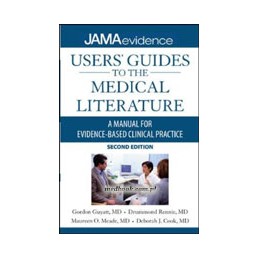- Obniżka


 Dostawa
Dostawa
Wybierz Paczkomat Inpost, Orlen Paczkę, DHL, DPD, Pocztę, email (dla ebooków). Kliknij po więcej
 Płatność
Płatność
Zapłać szybkim przelewem, kartą płatniczą lub za pobraniem. Kliknij po więcej szczegółów
 Zwroty
Zwroty
Jeżeli jesteś konsumentem możesz zwrócić towar w ciągu 14 dni*. Kliknij po więcej szczegółów
The #1 guide to the principles and clinical applications of evidence-based medicine has just gotten better!
A Doodys Core Title ESSENTIAL PURCHASE for 2011!
No other resource helps you to put key evidence-based medicine protocols into daily clinical practice better than Users Guides to the Medical Literature.
An instant classic in its first edition, this detailed, yet highly readable reference demystifies the statistical, analytical, and clinical principles of evidence-based medicine, giving you a hands-on, practical resource that no other text can match.
Here, youll learn how to distinguish solid medical evidence from poor medical evidence, devise the best search strategies for each clinical question, critically appraise the medical literature, and optimally tailor evidence-based medicine for each patient. The new second edition of this landmark resource is now completely revised and refreshed throughout, with expanded coverage of both basic and advanced issues in using evidence-based medicine in clinical practice.
FEATURES::
Opis
